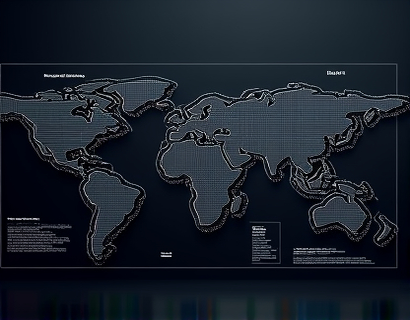Advanced Graph Theory and Fluid Dynamics Analysis Tools: Revolutionizing Research and Engineering
In the rapidly evolving fields of graph theory and fluid dynamics, researchers and engineers are increasingly relying on sophisticated software solutions to tackle complex problems. These advanced tools have transformed the way data is analyzed and visualized, leading to significant breakthroughs in mathematical modeling and fluid mechanics. This article delves into the capabilities and applications of these tools, highlighting how they are driving innovation and optimizing performance in various industries.
The Importance of Advanced Tools in Graph Theory
Graph theory, a branch of mathematics that studies the properties and applications of graphs, has found extensive use in computer science, network analysis, and optimization problems. With the complexity of modern systems, traditional analytical methods often fall short, necessitating the use of advanced software tools. These tools offer a range of functionalities that streamline the analysis of large and intricate graph structures.
One of the primary advantages of these tools is their ability to handle large-scale networks efficiently. They employ sophisticated algorithms to perform tasks such as shortest path finding, network flow optimization, and community detection. For instance, the use of parallel computing and distributed algorithms allows these tools to process massive datasets in a fraction of the time required by conventional methods.
Enhanced Visualization Techniques
Visualization plays a crucial role in understanding complex graph structures. Advanced tools provide interactive and dynamic visualization capabilities, enabling researchers to explore and interpret data more effectively. These visualizations can range from simple node-link diagrams to sophisticated 3D representations, providing insights into the underlying patterns and relationships within the data.
For example, color-coding nodes based on specific attributes or using edge thickness to represent weight can help identify critical components of a network. Time-based animations can also be used to show the evolution of a network over time, which is particularly useful in studying dynamic systems such as social networks or traffic flow.
Fluid Dynamics Analysis Tools: A Game Changer
Fluid dynamics, the study of fluids in motion, is essential in various engineering disciplines, including aerospace, automotive, and environmental engineering. The complexity of fluid behavior requires precise and accurate analysis, which traditional methods often cannot provide. Advanced software tools have revolutionized this field by offering powerful simulation and analysis capabilities.
Computational Fluid Dynamics (CFD) software is at the forefront of these advancements. These tools use numerical methods and algorithms to solve and analyze problems involving fluid flows, heat transfer, and related phenomena. The accuracy and efficiency of modern CFD tools have made them indispensable in the design and optimization of systems such as aircraft, ships, and pipelines.
High-Fidelity Simulations
One of the most significant features of advanced fluid dynamics tools is their ability to perform high-fidelity simulations. These simulations can model complex fluid behaviors, including turbulence, multiphase flows, and chemical reactions. By accurately capturing these phenomena, researchers can gain deep insights into the underlying physics and make more informed design decisions.
For instance, in aerospace engineering, CFD simulations can predict aerodynamic performance and identify potential issues such as flow separation or shock waves. This information is crucial for optimizing aircraft designs to reduce drag and improve fuel efficiency. Similarly, in the automotive industry, CFD tools help in designing more aerodynamic vehicles, leading to better performance and reduced emissions.
Real-Time Analysis and Optimization
Modern fluid dynamics tools also support real-time analysis and optimization. This capability is particularly valuable in applications where quick decisions are necessary, such as in process control and dynamic simulation. By integrating these tools with sensors and control systems, engineers can monitor and adjust processes on the fly, ensuring optimal performance and safety.
For example, in chemical processing plants, real-time fluid dynamics simulations can help in managing flow rates and pressures, preventing equipment damage and ensuring consistent product quality. In environmental engineering, these tools can be used to model and mitigate the impact of pollution, aiding in the development of sustainable solutions.
Integration and Interdisciplinary Applications
The versatility of advanced graph theory and fluid dynamics tools extends beyond their primary domains, finding applications in various interdisciplinary fields. The integration of these tools with other computational methods and data sources enhances their utility and broadens their impact.
In bioinformatics, graph theory tools are used to model biological networks, such as protein-protein interaction networks and gene regulatory networks. By applying graph algorithms, researchers can identify key nodes and pathways, leading to a better understanding of biological processes and potential targets for drug development.
Similarly, in environmental science, fluid dynamics tools are used to model climate systems and predict weather patterns. Coupling CFD with climate models can improve the accuracy of simulations, helping scientists understand and mitigate the effects of climate change. In urban planning, these tools can simulate air flow and pollution dispersion, aiding in the design of more sustainable and livable cities.
Collaborative Platforms and Cloud Computing
The rise of collaborative platforms and cloud computing has further enhanced the capabilities of these advanced tools. Researchers and engineers can now access powerful computational resources on demand, eliminating the need for expensive hardware investments. Cloud-based platforms also facilitate collaboration, allowing teams to work together in real-time, regardless of their physical location.
These platforms often provide a suite of tools and services, including data storage, visualization, and machine learning integration. For example, a researcher working on a graph theory problem can use a cloud-based graph analysis tool to process large datasets, visualize results, and run machine learning algorithms to discover patterns and make predictions.
Challenges and Future Directions
Despite the significant advancements, there are still challenges to overcome in the development and application of these tools. One major challenge is the need for more user-friendly interfaces that can cater to users with varying levels of expertise. Simplifying the user experience without compromising on functionality is an ongoing area of research.
Another challenge is the integration of multi-physics simulations, where fluid dynamics and graph theory are combined with other physical phenomena. Developing robust and efficient algorithms that can handle these complex interactions is crucial for advancing the field.
Looking ahead, the future of graph theory and fluid dynamics analysis tools is promising. The continued improvement in computational power, coupled with advancements in artificial intelligence and machine learning, will further enhance the capabilities of these tools. Researchers can expect more automated and intelligent systems that can handle even more complex problems with greater accuracy and speed.
Conclusion
The integration of advanced graph theory and fluid dynamics analysis tools has transformed research and engineering practices, enabling more accurate and efficient analysis of complex systems. These tools not only streamline data analysis and visualization but also open up new avenues for innovation and discovery. As these technologies continue to evolve, they will play an increasingly vital role in addressing the challenges of tomorrow.










































